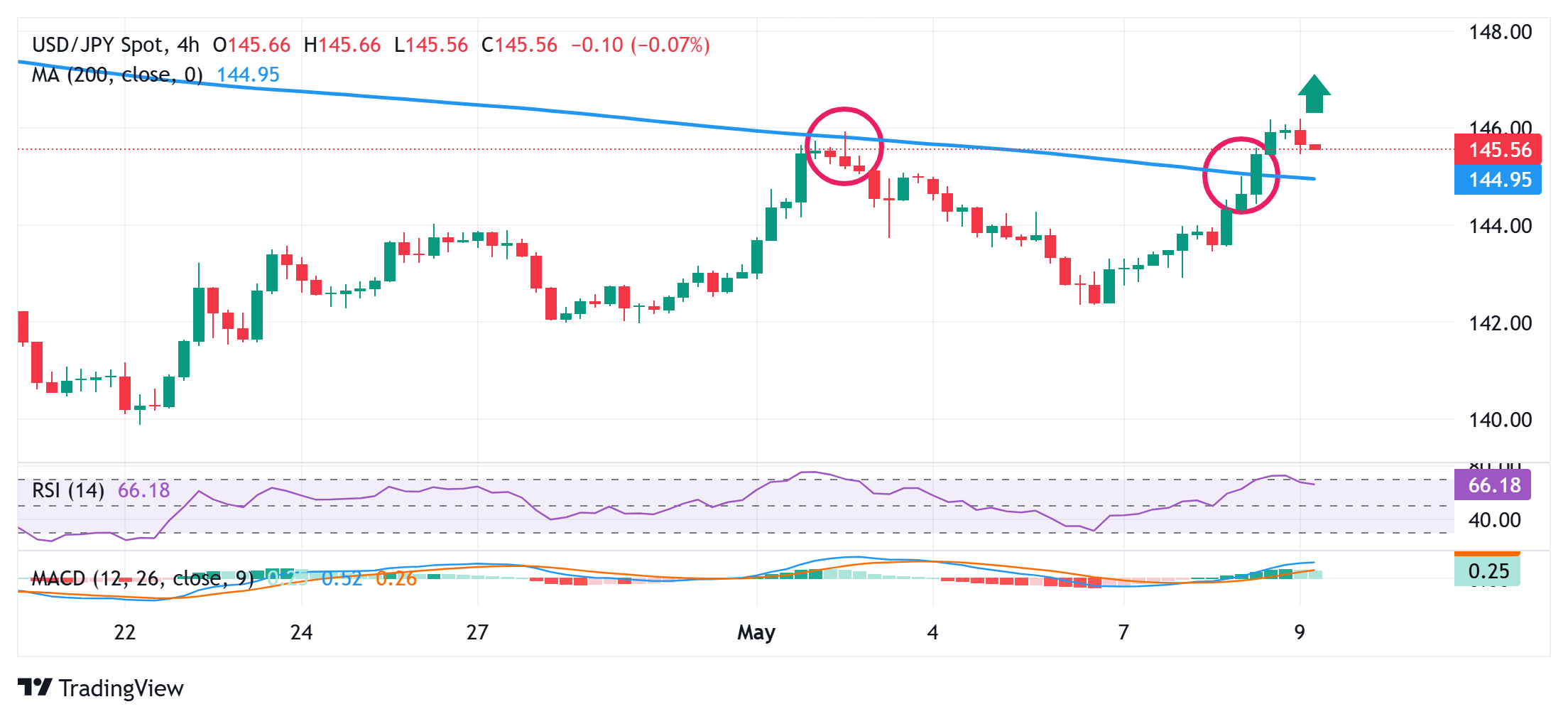Japanese Yen sticks to modest recovery gains against USD; upside potential seems limited

- The Japanese Yen attracts some intraday buyers on Friday, though the upside seems limited.
- The mixed Japanese macro data boosts the case for further BoJ rate hikes and back the JPY.
- The Fed’s hawkish pause favors the USD bulls and supports USD/JPY amid trade optimism.
The Japanese Yen (JPY) remains on the front foot against its American counterpart through the Asian session and for now, seems to have snapped a two-day losing streak to a four-week low touched earlier this Friday. The upbeat Household Spending data from Japan boosts the case for further interest rate hikes by the Bank of Japan (BoJ) amid the broadening domestic inflation. This, along with rising geopolitical tensions, drives some safe-haven flows towards the JPY.
Meanwhile, the US-UK trade deal adds to the optimism led by the US-China tariff negotiations over the weekend and eases US recession fears, which, in turn, could act as a headwind for the JPY. Furthermore, the Federal Reserve’s (Fed) hawkish pause on Wednesday should limit any meaningful and pave the way for a further near-term appreciating move for the USD/JPY pair. The subsequent move up could lift spot prices to an intermediate hurdle near the 146.75-146.80 region en route to the 147.00 mark. The momentum could extend further towards the 147.70 horizontal resistance before the pair aims to conquer the 148.00 round figure and climb further towards the 148.25-148.30 supply zone.
Japanese Yen FAQs
The Japanese Yen (JPY) is one of the world’s most traded currencies. Its value is broadly determined by the performance of the Japanese economy, but more specifically by the Bank of Japan’s policy, the differential between Japanese and US bond yields, or risk sentiment among traders, among other factors.
One of the Bank of Japan’s mandates is currency control, so its moves are key for the Yen. The BoJ has directly intervened in currency markets sometimes, generally to lower the value of the Yen, although it refrains from doing it often due to political concerns of its main trading partners. The BoJ ultra-loose monetary policy between 2013 and 2024 caused the Yen to depreciate against its main currency peers due to an increasing policy divergence between the Bank of Japan and other main central banks. More recently, the gradually unwinding of this ultra-loose policy has given some support to the Yen.
Over the last decade, the BoJ’s stance of sticking to ultra-loose monetary policy has led to a widening policy divergence with other central banks, particularly with the US Federal Reserve. This supported a widening of the differential between the 10-year US and Japanese bonds, which favored the US Dollar against the Japanese Yen. The BoJ decision in 2024 to gradually abandon the ultra-loose policy, coupled with interest-rate cuts in other major central banks, is narrowing this differential.
The Japanese Yen is often seen as a safe-haven investment. This means that in times of market stress, investors are more likely to put their money in the Japanese currency due to its supposed reliability and stability. Turbulent times are likely to strengthen the Yen’s value against other currencies seen as more risky to invest in.
